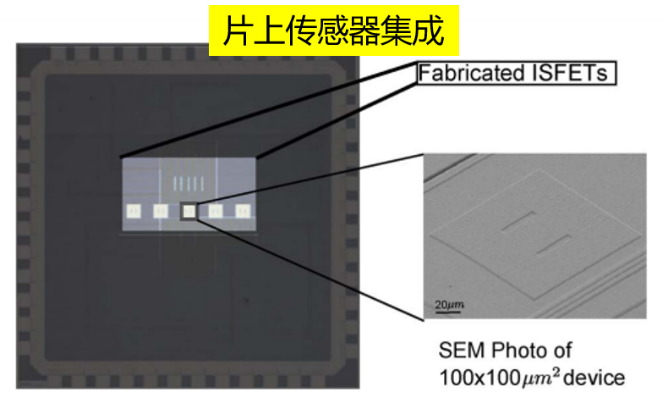利用集成电路技术和微电子技术,在芯片上直接实现生化检测和细胞培养,能够减少采样数量,降低干扰,提升检测精度,同时充分利用芯片的高度集成度,实现多种功能、不同检测、调控尺度的微型化大规模集成。但是生化检测及调控应用对芯片平台的传感器实现和检测电路集成提出了极高的要求,现有技术在传感器和激励源制备集成、传感和调控电路性能等方面存在不足,无法满足更高精度、更大规模的生化检测和调控需求。因此需要从芯片适配的传感器激励源加工工艺、以及面向集成传感器调控器件的高精度接口电路及系统两方面开展研究。

代表性成果:
[TBiCAS-2019] Liu, Yan, Timothy G. Constandinou, and Pantelis Georgiou. "Ultrafast large-scale chemical sensing with CMOS ISFETs: A level-crossing time-domain approach." IEEE transactions on biomedical circuits and systems 13, no. 6 (2019): 1201-1213.
采用时间域读取技术,精简前端电路,在匹配传感器适配的同时,实现0.013pH的检测精度和5k 采样率的1千点位电化学成像

代表性成果:
[TED-2011] Liu Yan, Pantelis Georgiou, Themistoklis Prodromakis, Timothy G. Constandinou, and Christofer Toumazou. "An extended CMOS ISFET model incorporating the physical design geometry and the effects on performance and offset variation." IEEE Transactions on Electron Devices 58, no. 12 (2011): 4414-4422.
在普通CMOS工艺实现了1x1微米尺度的电化学传感器,并提出了目前被普遍采用离子敏感性场效应管模型,进行了多尺度的性能分析。


